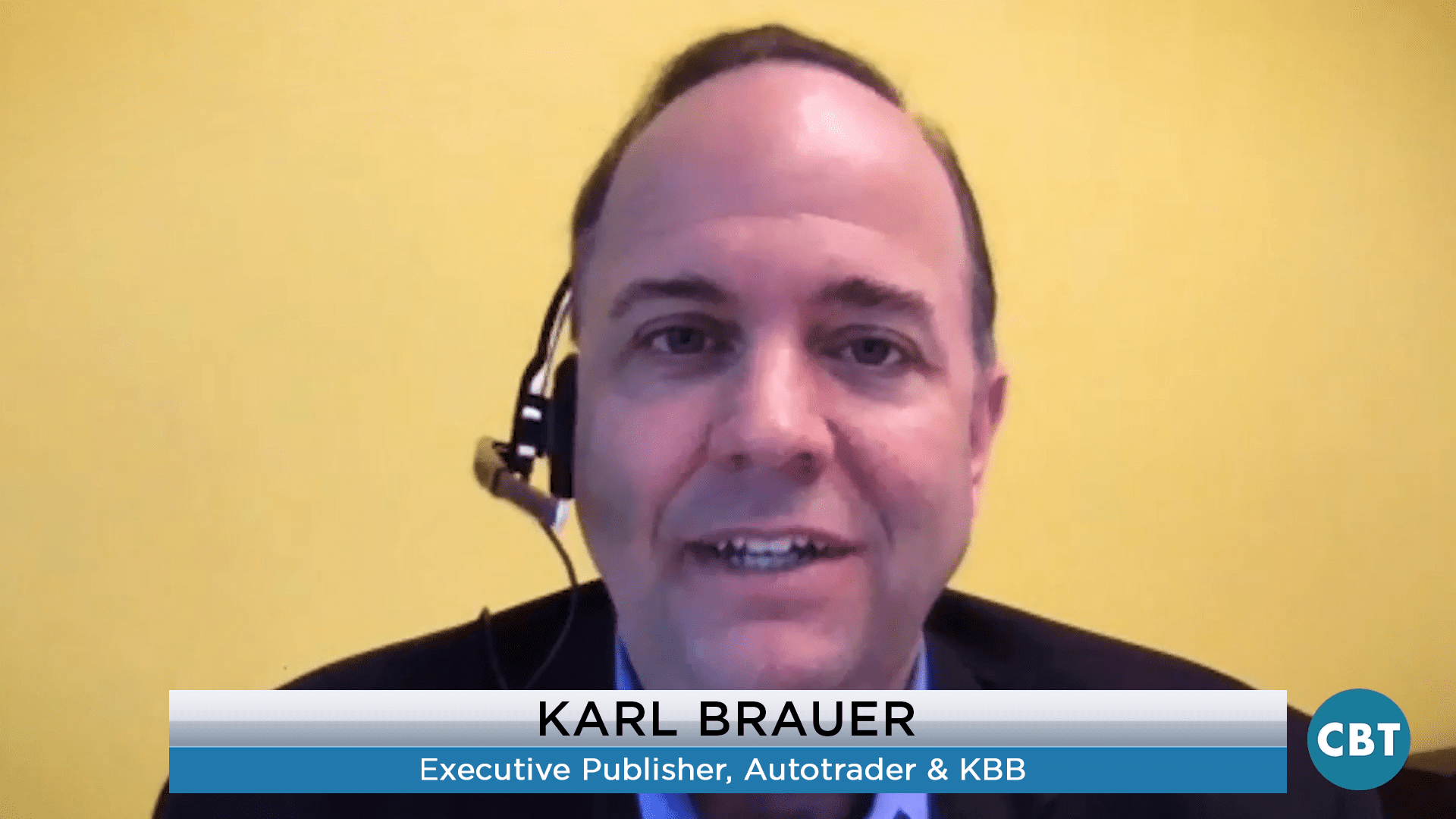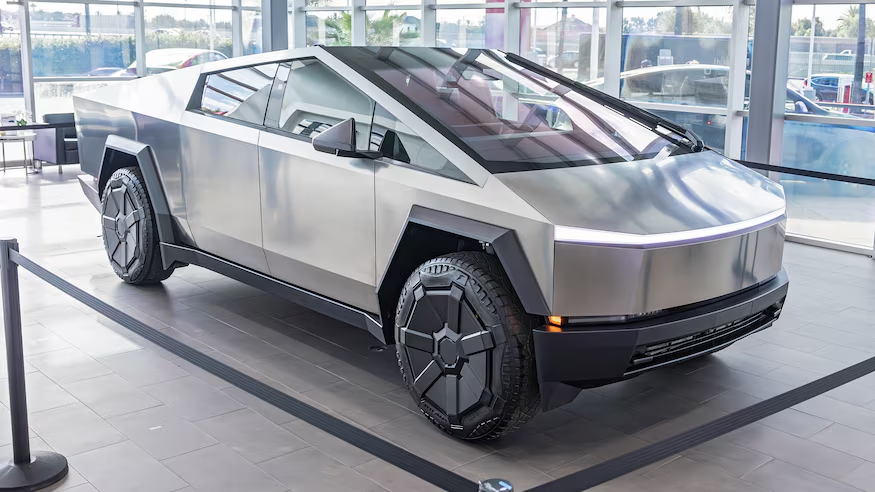Despite winter storms and a long government shutdown, January sales numbers ended up better than most people expected. We explored these findings further with Karl Brauer, executive publisher for AutoTrader and Kelley Blue Book. Karl shared his insight about this month’s winners, losers, and what dealers can expect for the rest of 2019.
VIDEO TRANSCRIPT:
Jim Fitzpatrick: Thanks very much for joining us on such short notice.
Karl Brauer: Hey, happy to be on with you guys. Plenty going on. Lots to talk about.
Jim Fitzpatrick: Yeah, that’s for sure, that’s for sure. Let’s talk a little bit about January sales. Where did that end up in all the categories and how are we lookin’?
Karl Brauer: You know, if you look at all the factors, it was actually, probably better than a lot of people expected for the month. We were down one percent, but when you think about things like polar vortexes and govt shutdowns, to be down one percent from the previous years is actually pretty impressive.
There was still a lot of demand for vehicles, particularly trucks and SUV’s, as we’ve seen. Of course, cars continue their slide. The number I saw, was that the market was 69.9% trucks and SUV’s. We’re essentially at 70% trucks and SUV’s. Remember when it was like a big deal that they’d crossed 50%.
Early to mid-2000’s and then when the economy went bad, it went back; people went back to cars because they were afraid of the gas mileage. Now we’re at 70% cars and trucks. I don’t think we’re ever going back to a majority of … sorry, trucks and SUV’s, I don’t know if we’re ever going back to cars as the dominant marketplace in the U.S. It’s crazy.
Jim Fitzpatrick: Isn’t that something. I just say Bob; I think his name’s Bob Carter of Toyota Motor Sales. He spoke at the NADA Convention at one of the luncheons for dealers and he said that they’re pretty bullish on vehicle sales; you know, he said that five million vehicles were sold in the U.S last year and he still believes in the Camry and he still believes in the Corolla and he still believes in a number of the different vehicles that they have. What’s your take on that? Do you think they’re nuts?
Karl Brauer: No because I think what we’re going to see is a drop off in demand for a lot of the cars that we’ve seen for the past few decades. But the strong players will survive and I keep using minivans as an example, for a long time, everyone was running into the minivan market and then when it started to flatten out and then contract, everyone ran out except for the strong players. You still have Honda and Toyota and Chrysler and now Kia in there… and there’s enough market for them. There will be enough market indefinitely for four, five, six players in the mid-size sedan market. But there’s not going to be enough for 12.
Jim Fitzpatrick: That’s a good point.
Karl Brauer: I think Toyota will be one of those strong players. So will Honda.
Jim Fitzpatrick: They’ll pick up those customers from Ford and some of the others that got out of it and say hey, come on over.
Karl Brauer: I think they’re just going to rinse and repeat on their car side, like they did with minivans.
Jim Fitzpatrick: Sure. I spoke to a Ford Dealer recently and he said, I’m troubled that Ford got out of the vehicle business at the level that they did because people would come in to the Ford brand, at a smaller vehicle and then as the family grow, we know how that works. You start to get a bigger car and then you get your minivan or you get you SUV and the you get your pickup truck or whatever and they lose that person that becomes married to the brand early on, when they’re running around town in their smaller Ford vehicle. Right.
Karl Brauer: It’s absolutely true and don’t forget too, that oftentimes when people lose the vehicle they’re interested in from a given brand, very commonly they abandon the brand completely.
We saw that when GM restructured and they lost several divisions and they were hoping to keep those customers with other divisions, but our research at the time, this is 10 years ago, I remember a lot of people for instance, went to the Korean brands. A lot of former Pontiac buyers and Saab people ended up with Hyundai’s.
It’s always tough when you lose either models or brands, it’s not guaranteed at all, that you’ll keep those customers within your larger automotive group.
Jim Fitzpatrick: Yeah, that’s crazy. But to think, 70% or almost 70% in that category is just unbelievable. It’s a wonder where this whole thing is headed right now. Talk to us about interest rates. I know this as been on the minds of many because we see an interest rate rise. As that affected sales or what’s that hold? What’s the impact that will have?
Karl Brauer: We do think that’s affecting sales and you know, let’s keep in mind that, that one percent drop included a real uptick in fleet sales, just like all of 18’s sales. They came in better for our total for 18 than people expected, but if you look at the percentage of private versus fleet sales, the fleet was up. Basically we were kind of leaning on fleet to keep the total number higher. Same thing for January and that’s because private sales, consumer sales are being pressured by things like interest rates being probably the number one factor. It’s pushing up the monthly payment that you’re going to make on a vehicle that you would have paid for the same price vehicle much less. I believe the interest rate, the average I saw was over six percent and a year earlier it was in the four percent range for a vehicle loan.
Numbers are going to make it more difficult for a certain amount of people, that’s why we also think there’s going to be a used car, kind of, uptick. We’re going to see maybe a certain amount of the percentage of consumers who would have gone new, are going to consider used more heavily and probably go used this year.
Jim Fitzpatrick: Okay. Then talk to us about the luxury segment. That seems to continually cranking along.
Karl Brauer: Yeah. It was fascinating again, because you saw some brands; a lot of the bigger brands like Mercedes and BMW and Audi was down slightly in January, but then you saw other ones like Porsche and Land Rover that were up big time in January.
The month was a real mix. There wasn’t a solid theme on any one thing. Incentives, for instance were a little lower than they had been in previous months, so that was a good sign. Like we said, fleet sales were up; which wasn’t necessarily a good sign and interests rates are up. I think if you were going to look for a larger theme, I would say you’re going to kind of have this battle between economic indicators that are giving some consumer confidence with realities of interest rates and just concerns about the future, that’ll still hold back and increase fleet sales, to kind of make up for that. You’re gonna see there’s a battle between forces that would suggest more car sales and forces that would suggest less. I guess the good news is, there isn’t one thing pushing it in a negative direction. There’s plenty of positives to offset some of these negatives.
Jim Fitzpatrick:: Sure. Talk to us about this subscription that we hear so much about; subscription sales. How does that play in to all of this? In all the numbers and such. Is a subscription a sale? Is it considered a sale in these number or is it considered a rental or how do you look at these, when you’re compiling your numbers?
Karl Brauer: I mean, it’s an interesting point right, because we really haven’t seen these before, but I think for a long time, people weren’t sure leases should be considered sales and now we just essentially wrapped ’em in, right.
I think that will happen with subscription. I think people will see those as a sale as well. But you’re going to see more flexibility and shorter terms. There’s just more people who are interested in these bundled deals, where you don’t have to wonder what you’re maintenance is going to be next month, or even your insurance is going to be. You get this one price deal.
It gets you your insurance, your service, the payment, all service needs, the payment for the car. Everything is handled, you know what it’s going to be for the term of the subscription, whether it’s six months or two years.
And sometimes there’s even some flexibility built into the vehicles you can choose. Where you can actually swap out vehicles. We actually believe, Cox Automotive, Kelley Blue book, we believe that subscription is one of the bigger opportunities, of all these things we see playing out, the car sharing and the ride handling and all these other things, we think subscription is actually got a lot of upside and we see it moving forward.
Jim Fitzpatrick: Sure. What’s your personal opinion of the future of subscription? Do you see it, from a guy in your perspective, you see it all and you’ve got your hand on the pulse of what’s happening, do you see it as a player here moving along?
Karl Brauer: I think when you look at the characteristics of subscription, again, that simple, one price per month, the ability to kind of do a lot of it online and set the deal up, this resonates with younger consumers. Younger consumers today, they want these more streamlined experiences. Look at what they do with Amazon, right and how easy it is to buy almost everything else with minimal, kind of back and forth and the idea that you’re going in and have to negotiate. I think the ability to have someone come to you and say, this is your price, there’s no up and down, it’s this price; it’s these things covered and you aren’t going to think about it for the next two years. I think people under the age of 40 and even more so, under the age of 30, find that very appealing.
Jim Fitzpatrick: Right. I would agree with you. I think that we’re looking at a … you know the millennials that are out there and now generation Z coming in after them, they’re looking at transportation; personal transportation in a whole new light, aren’t they.
Karl Brauer: Yes, they are. They are. It does have to meet their needs. We were just doing a career day here at Kelley Blue Book, we had a lot of the high schooler kids in a couple hours ago and we asked them, what’s your perspective on cars? What do you think of the car situation? Many of them were like, ‘call a UBER and not have to worry about parking and insurance is really appealing to us.
Jim Fitzpatrick: Oh my gosh, has that changed.
Karl Brauer: Yeah.
Jim Fitzpatrick: That’s all I could think about when I was in high school, was getting my own car.
Karl Brauer: Isn’t that crazy. [crosstalk 00:09:25]. I mean, isn’t that crazy how that independence, they don’t see it as that now, they see it as more of a kind of a cost issue and a logistic challenge and they just assume, let someone else worry about it. It’s crazy.
Jim Fitzpatrick: That’s right. From the age of 14 to 15 when I got the permit, then 15 to 16, I was like ever other red-blooded American out there that said, oh man, I can’t wait to get a car. I don’t care what kind of car it is, as long as it’s my own and I can drive it around.
Karl Brauer: That was me. I was first online, my birthday, 16th birthday to finish off my thing and I’d had my permit for six months and couldn’t wait.
Jim Fitzpatrick:: That’s right. That’s exactly right. Talk to us about the balance of the year. What say you on 2019 overall?
Karl Brauer: I mean, I think there are as many upsides as downsides and I think we’ll see consumers who are wanting to buy vehicles; buy them. But I think we’ll see, probably, an increase in used car sales relative to new car and I think we’ll probably see an increase in fleet relative to new car, but I think we’ll see plenty of new car. I mean, you have to keep in mind, right, we sit here and we say, oh gosh, it might fall below 17 million for the first time since 2014. Remember when we were at 10 million and people didn’t know if we’d ever go back above 12 or 14 million.
You see these people get all wound up that it could only be 16.8 million in 2019 and it’s like, guys, there’s a lot of cars moving at 16.8 and there should be a lot of money made.
I saw a report recently about how the dealers are getting smarter about their costs. Because they still have to make a profit, even if … volume is one thing, but you got to be making money at that volume whatever it is.
You know the dealers are getting smarter and streamlining their costs. I think that kind of could be the message for 2019. It’s going to be a year of more scrutiny on everything related to your costs as a business, whether you’re a auto maker or a dealer.
I think there’s room though, in both those cases to tighten some belts and maintain profitability.
Jim Fitzpatrick: Yeah, that’s what it’s all about. It’s all about efficiencies and how you can run that dealership on just less cash, right.
Karl Brauer: Right.
Jim Fitzpatrick: ‘Cause you’re gonna make just so much money on the new cars, hopefully you make money on the new cars and look to used cars and service and these other areas. One dealer we spoke to opened up a donut shop and a car wash and a couple of other and he said, I need every possible revenue stream I can get my hands on coming into this, these 20 acres that I have for my dealerships and so that seemed to work for him. Karl Brauer, Publisher for Autotrader and Kelley Blue Book. I want to thank you so much again for such short notice, jumping on with us today. This as been great. Our viewers get such a lot out of whenever you’re on and Cox Automotive is obviously always right there on the cutting edge to help dealers out. Again, thank you so much. I appreciate it.
Karl Brauer: Great being on with you guys. Always fun to talk industry with you.
Jim Fitzpatrick: Great. Thanks so much.








